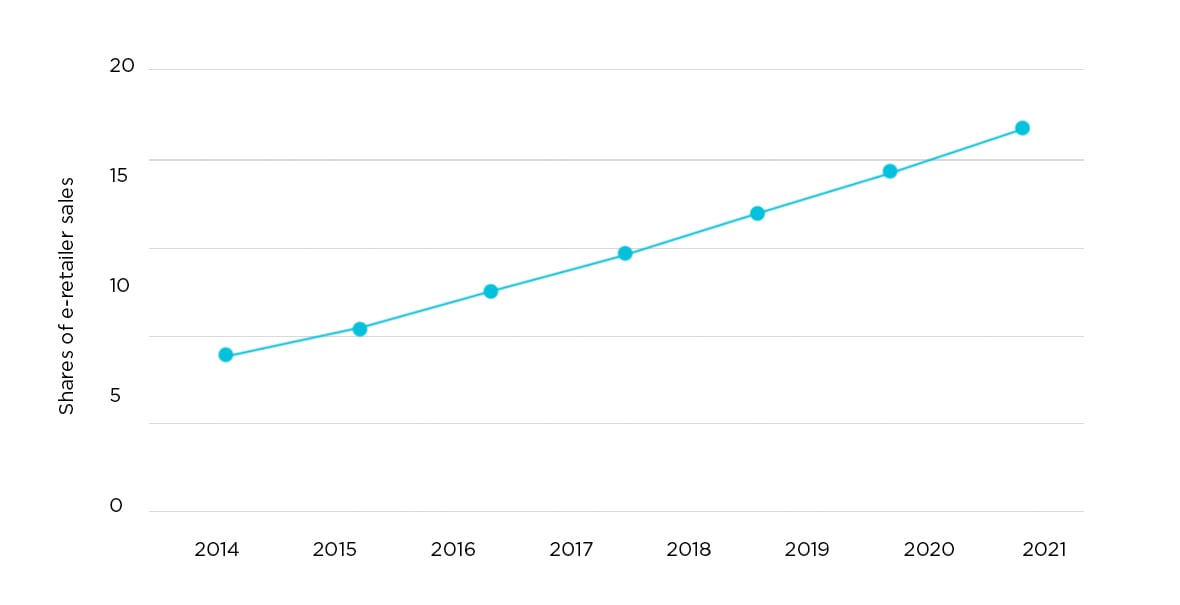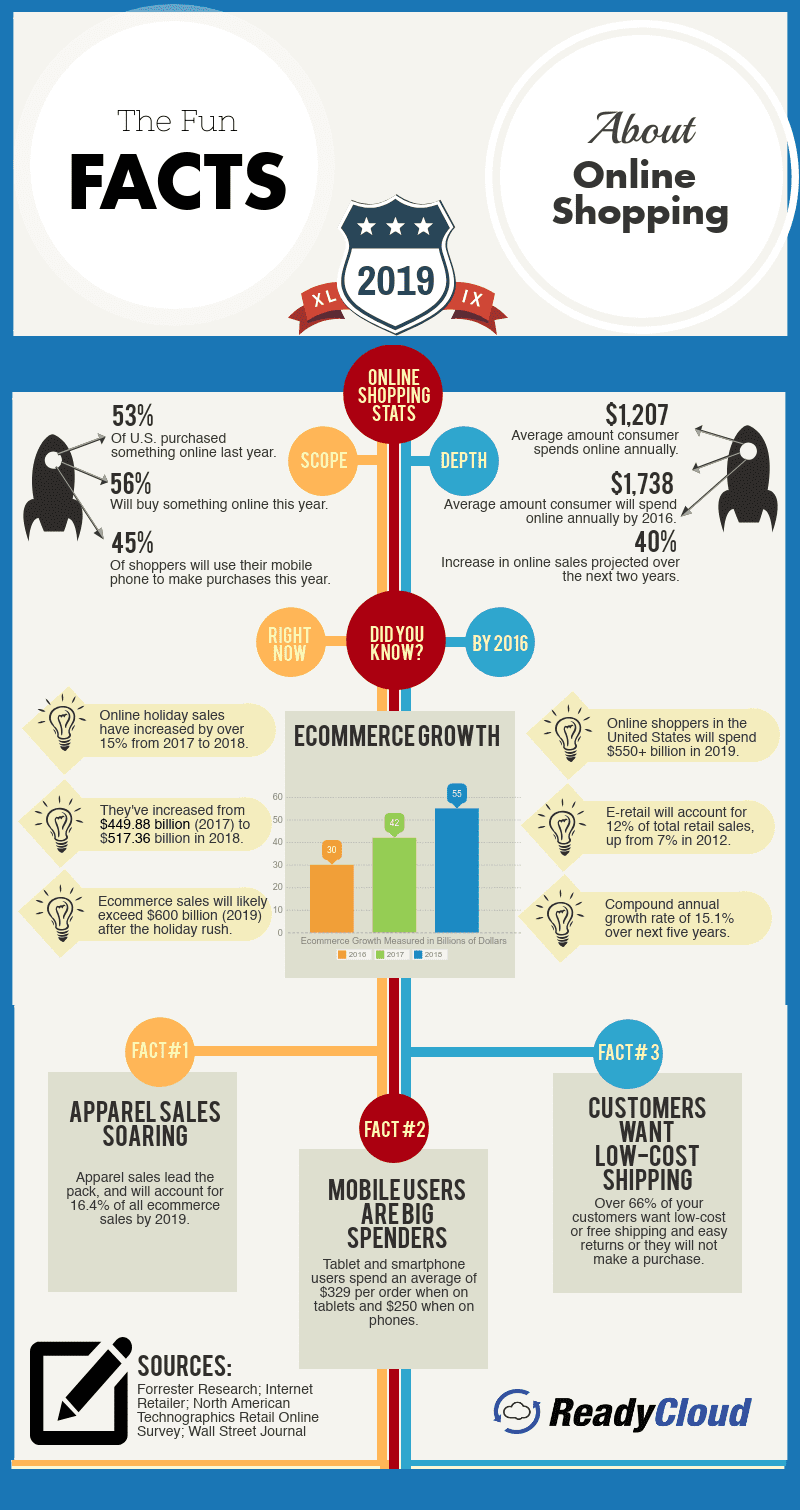2019 Ecommerce Technology Trends That Change the Game

Think tank Oberlo is forecasting that an estimated 1.92 billion people will make digital purchases in 2019, a number that will increase to 2.2 billion by 2021. This cavalcade of online shoppers will set a record, accounting for about 25% of the world’s population.

At the moment, ecommerce tallies just 13% of all retail sales worldwide. But the influx of new digital buyers will peak by the year 2021, helping ecommerce grab a 17% market share of worldwide retail sales.

What ecommerce technology and trends can you expect to see in place if you’re one of the 54% of people who shop online for lower prices or one of the 46% of people who use ecommerce to save time and because online stores never close?

We’re going to dive into the five most important trends to watch for this year. Read on to learn more.
One-Click Checkouts
Technically, one-click checkouts are nothing new. At the same time, they’re newish for most retailers. Here’s why. Way back in 1999, Amazon patented the one-click checkout technology. It would ultimately become a part of its exclusive Prime membership and would help the retailer grow by leaps and bounds.
With cart abandonment rates hovering at about 79%, a one-click checkout helps reduce these by creating a seamless checkout process that’s accentuated by a sense of urgency. No wonder this technology helped Amazon decrease its abandonment rate by a healthy 5%, adding an estimated $2.4 billion to the company’s net worth.
In 2017, the patent expired, though. Then it became a free-for-all for every other shopping cart on the market. As proven as the one-click method is, many retailers have yet to still adapt it, even though 30% of their traffic and sales comes from mobile devices, where digital buyers want a one-click checkout.
Currently, Apple, Facebook and American Express are working cooperatively on a one-click technology and Google is also building their own version. Without a doubt, this will be one of the biggest ecommerce technology trends we’ll see for years.
Chatbots Have Arrived
AI powered chatbots will take over the ecommerce world in the very near future and are already in place at many recognizable online stores.
Of the key reasons for retailers to use chatbots as customer service and marketing tools the following top the list:
- Intuitive and immediate customer service tool.
- Improves conversions and reduces cart abandonment.
- Drives unadulterated feedback about your online store.
- Captures customers in a decision-making moment that can seal the sale.
While chatbots do require some tinkering and they nearly always need to be monitored or linked to a live representative (when available) so that important messages are expedited to actual humans, they’re an ecommerce trendsetter for a few candid reasons.
To compare live chat or the equivalent that’s offered by a chatbot with other customer service channels, Econsultancy discovered that 73% of customers were satisfied with their live chat experience. Only 61% of email users and a worrisome 44% of phone users gave the same answer.
Did you know that a whopping 77% of online shoppers won’t make a purchase from your store if your site doesn’t offer live chat? The number is shocking, and it’s enough to convince any e-tailer to add the feature. That’s not all. A recent Forrester study found the following:
- 10% increase in average order value when customers engaged in live chat before making a purchase
- 48% increase in revenue per chat hour
- 40% increase in conversion rate
Ecommerce AI is Here
One of the most burgeoning technology trends in ecommerce for 2019 is ecommerce artificial intelligence. This type of AI is already in place at most major online retailers, and some shopping cart services offer it as an included or addable perk for using the service, too.
Now we’ve already talked about one form of this AI above, chatbots. But another way that works is via product suggestions, message specific pop-ups and exit-pops, and even things like pagination and breadcrumbs. This is how retailers like Amazon, Walmart, Target and Best Buy are able to offer you time-based suggestions, special offers and related products when your browsing their online store.
These recent ecommerce facts help us better understand the practical application of AI within a shopping cart:
- 80% of consumers enjoy seeing product recommendations.
- 49% of consumers have bought something they didn’t initially need because of product recommendations.
- 54% of consumers stopped interacting with a brand after receiving poor service.
- 77% of consumers would recommend a business after having a positive experience.
While AI, in some form, has been present in ecommerce for years, the addition of AI powered chatbots, voice search and updated retargeting models make it even more attractive of an option. It’s interesting to see AI and bots making a splash in ecommerce on the retailer’s side, as sophisticated shoppers have been gaming the system for years using sneaker proxies and bots to grab up multiple purchases of limited-edition ecommerce products. But it seems the playing field is finally leveling out, technologically speaking.
Retargeting is Supercharged
Retargeting works hand-in-hand with other ecommerce technologies to help reduce cart abandonment, increase average order value and improve second-chance sales across the board. ‘
No wonder these recent retargeting statistics show such healthy numbers:
- Retargeted customers have a 70% likelihood of converting when they return to your website.
- Retargeting ads have a 100% higher return rate than display or text ads, with display ads earning an average 0.07% CTR and retargeting ads earning a healthier 0.7% CTR.
- Retargeted ads earn up to a 27% reconversion rate on shoppers who’ve abandoned the cart.
- Two-thirds of shoppers pay attention to a retargeting ad after they’ve bounced away from an ecommerce website.
- Nearly 30% of consumers see retargeting ads in a positive light, with 59% having a neutral response to them.
- 25% of consumers like retargeting ads because they remind them of products and services they want but may not be ready to use just yet.
Want to see how widely used retargeting is? Well if you understand how it works, you can run your own test. Visit one of your favorite online stores and browse some products. Now bounce away (leave the site) and go to your favorite online news site. Sure enough, if the retailer has retargeting in place, you’ll see ads about the retailer and or products you were browsing when you clicked away. As you can imagine, and as the statistics attest, it’s a powerful, proven reengagement tactic.
Voice Search is Here to Stay
In an Alexa, Echo and Google Home inspired modern world, the next big ecommerce technology trend is evolving before our very eyes (and ears). We’re talking about voice search. In our December 2018 write-up on ecommerce technology trends, we noted that voice search would be making a big splash this year, and it has.
While voice search certainly plays a strong role in mobile commerce statistics, it’s a powerful incubator for what’s to come. That’s because mobile shopping is expected to comprise more than 58% of ecommerce purchases by 2021. The truth is that people love to use their phone and apps load shopping cart items 150% times faster than web browsers do. Naturally, consumers want to also search for, shop and purchase products from their handsets using voice commands, too.
According to a Forbes report, nearly half of online searches will be conducted by voice search by 2020. This will help propel ecommerce voice shopping to a $40 billion segment of the market by 2022. A related 2017 Voicebot study found that 25% of shoppers used voice to make a holiday purchase that year, with about 1 billion voice searches being conducted during any given month.
With more than 55% of U.S. households already having a voice-controlled smart speaker, it’s obvious to see why and how this emerging ecommerce technology trend is taking shape. Over the next few years, many people will just talk to the store they’re shopping at online, via a smart device, to find what they want to buy.
Ecommerce Predictions for 2019
What else does 2019 have in store for ecommerce? Here’s a quick breakdown of some of the most recent statistics and trends that will carry over well into next year and beyond.
- U.S. e-commerce sales will exceed $612 billion (Statista).
- Global ecommerce sales will surpass $2.1 trillion (Kinsta).
- U.S. mobile commerce will surpass $2 billion in purchases, with a majority of these purchases coming from smartphones (Invesp).
- Cross-channel sales will become the new omni-channel king, with a predicted $1.8 trillion haul (Forrester Research).
- Mobile commerce sales will top 30% for the first time, and will steadily increase (Internet Retailer).
- 55% of e-commerce traffic will originate from a mobile device (Marketing Land).
- Social commerce growth will exceed 25% (ReadyCloud).
- E-commerce will generate at least 8.6% of all retail sales (eMarketer).
- 88% of online shoppers will use webrooming to find the best price (Retail Perceptions).
- At least 15% of retailers will offer a price match guarantee (Biz Journals).
- E-wallets and one-click checkouts will become the new norm (HuffPo).
- Artificial intelligence will drive at least $4.5 billion in purchases (Apium).
Need even more tips?
Take a look at this infographic we’ve created that highlights some of the most pertinent online shopping facts for 2019.

What You Should Do Now
Here are 3 ways ReadyReturns can help you deliver amazing return experiences that eliminate prepaid labels and boxes, delight customers, and protect your margins:
Schedule a Demo – See how ReadyReturns turns product returns into your competitive advantage with “Amazon-like” returns and cost-saving features.
Start Your Free Trial of ReadyReturns (No CC Required) – Set up in minutes. Instantly offer QR code returns, product exchanges, and custom return rules that turn frustrated customers into repeat buyers.
Try Readycloud at No Cost – Why manage shipping and returns separately? Get ReadyShipper X, ReadyReturns, and more in one unified platform for seamless fulfillment and order management.
Share On:








